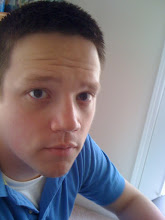1. Title: Looking for Alaska, awarded the Michaell Printz Award
2. Author: John Green
3. Illustrator: N/A
4. Publisher and Publishing Date: Dutton Books, 2005
5. Genre: Young Adult, Realism Fiction
6. Age range for which the book is appropriate: 16-death
7. Teenagers will love this book for many reasons. For one, it has a sex scene where a young boy gets oral pleasure. Also, it deals with real life teen issues that teens experience every day of their lives such as smoking, drinking, cussing, and many more; however, teenagers will love this book because it authentic to life and holds nothing back, which is a truly rare thing in literature and even in people in general.
8. A summary:
This book cannot be summarized, it cannot be read, it must be absorbed by its audience because it is truly the best book written in the last fifty years. The first section of the book is titled Before. It begins with a boy named Miles Halter who decides that he will go to a private school to search for “the great perhaps.” This is his notion to live by because he is obsessed with people’s last words, which encourages him to live through his great perhaps. I think that the majority of his time is spent throughout the novel trying to find something in his life, no, to create something in his life that would be worth saying on his own death bed. When he arrives at Culver Creek Preparatory School he meets his roommate Chip, who is a poor but very intelligent student. He then meets Alaska, who is beautiful in her difference. It becomes obvious as they smoke, buy wine/beer from the local store, and party like crazy that Alaska has had a truly rough go of life and yet still manages to survive, for a while. One night, Miles is taped/tied up and thrown into the lake where he could’ve drowned as an initiation and payback from the “popular boys.” One night they plan a legendary stunt/prank, something Alaska is famous for, they all begin drinking. They then run the grounds of the school setting off fireworks and scaring the dean named “The Eagle” by the students. This gives a drunken Alaska the chance to escape without The Eagles knowledge. She drives drunk into a tractor trailer and dies. This sets up the After section of the book where Chip and Miles must confront their guilt and their sadness at the loss of their friend.
9. Personal Response:
I love this book and it is by far one of my favorites. The book at first made me feel happy and helped me reflect on my own wild younger days, but in the second section after the death or possible suicide, it made me feel very sad to the point of tears. This just made me love it even more. The book relates to my own experiences as I was once a party boy and did a lot of the same stupid things Miles and the group did. Also, I have had great loss in my life and felt the pain and guilt of it. This book reminds me a lot of Catcher in the Rye by J. D. Salinger, which shares many of the same themes. I connected the book in a way to the movie Breakfast Club as many of them suffer great hardships and bad choices.
10. Teaching ideas:
I would teach this book as a separate section of English III, American Literature. I would teach it as a book about growing up and the importance of decision making. I would also teach the archetypical and themeatical modes of writing through this book.
The multi-media connection I would make would be thorough showing the movie The Breakfast Club.
